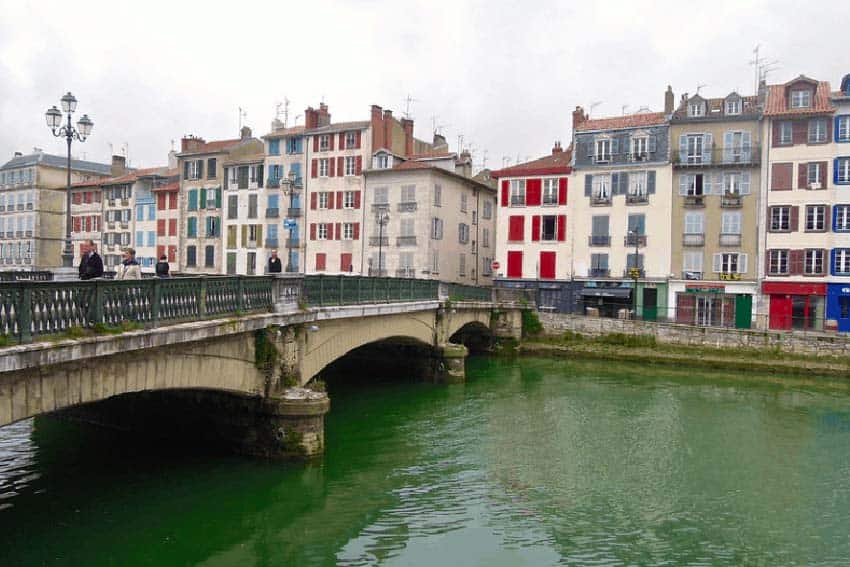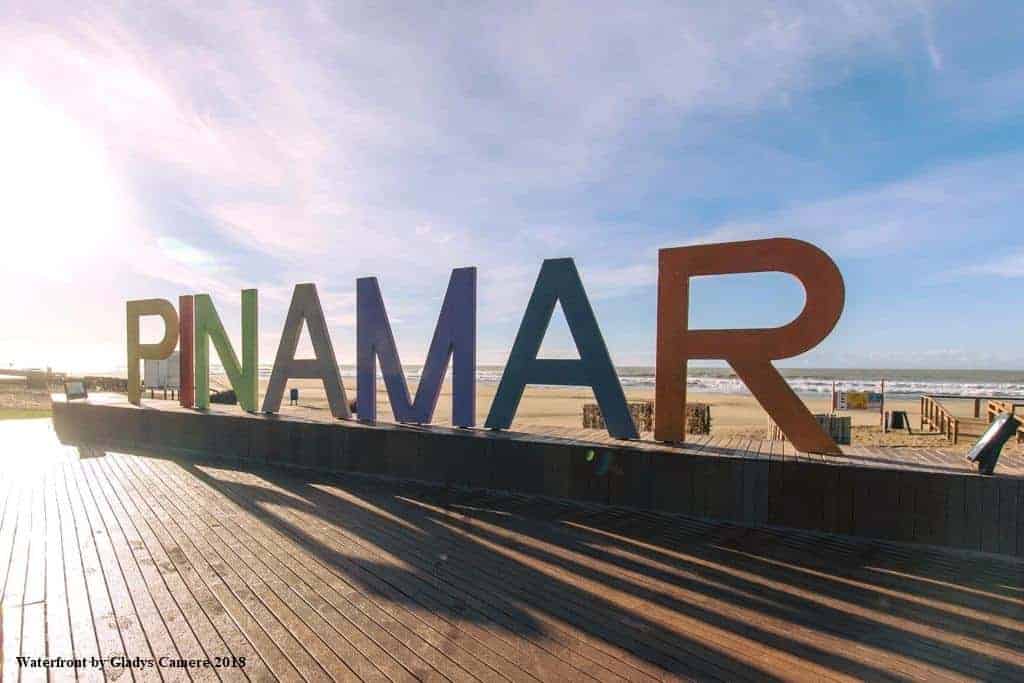
The Window to Argentina’s Pampas: From Swimming Holes to Giant Omelettes
By Lydia Carey

It was the desert that had me so achy for the plains. The desert of San Miguel de Allende where I used to live, then the desert outside of Mexico City where I live now and while on this trip to Argentina, the desert of Salta with its mars-like landscapes.
Sierra de la Ventana is on the borderline, the edge, of the Pampas. This is what I had been waiting for – grazing cattle, windswept plains and gauchos (cowboys) – the elements of a lost time.
But summer in the Pampas is dry. So dry that the only relief is the area’s mirade of rivers and streams – dammed to create swimming holes and luxurious riverside camping spots where dogs and kids and grandparents all dip their bellies in to cool off.

Sierra is a great stopping off point for a trip from Buenos Aires to southern Argentina.
It’s about an hour outside of Bahia Blanca, the largest town in the area and a direct flight from Buenos Aires, but with more charm and traquility.
A Summer Place
It’s been a popular summer destination since the turn of the century and although it continues to draw mostly Argentinian tourists to its tiny streets, the place has a feeling of nostalgia that makes you feel like you’ve stepped back in time a few decades.
In the evenings families sit on sidewalk cafes eating ice cream or by the town’s train station to watch the night train arrive, during the day they swim at the golf course’s aging swimming pool and sit under the shade of weeping willow trees along the river.

The town grew up around the train station, which was important for tourist trade there and you can still catch trains to both Bahia and Buenos Aires (a 7-hour drive to BA is a 12-hour train ride, but its worth it for the scenery).
“I’ve been the manager of the station since my father retired when I was 18,” Rubén Darío García told us. “I already knew how to do everything…and there was nobody else.”
A tall man, who squints in the sun at us, he has a mini-museum in the station with a small collection of train memorabilia that he’s happy to show off.
As far as museums go, the town also has a mate museum – worth a look if only for its kitschiness – but the best activities there are really outdoor ones.
The Cerro Ventana is a popular hiking spot at whose foot sits the Parque Provincial Ernesto Tornquist, a rambling 6,700 hectares of camping and hiking grounds that you access through an old hacienda gate.
Days after we left in December, the park had a forest fire that consumed 5,000 hectares of land, from which it will surely not recover for years to come, but there are still plenty of hectares to explore. There are also lots of water activities in the region’s rivers and streams, flying fishing for rainbow trout, tubing, and swimming.
Swimming Holes
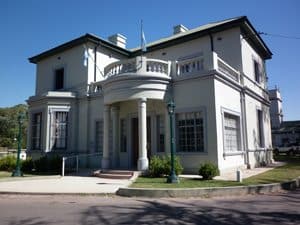
One waterhole not to be missed is outside of the town Villa Ventana, 17 kilometers
Here, the Belisario river was dammed to create a deep swimming hole and some enterprising Argentines build a cozy campground beside it.
Around 2 o’clock the place starts to fill up with locals, escaping the afternoon heat of their houses, back-flipping off the walls of the meters high dam and sipping mate in true Argentina style.
A few feet up the hill from the dam (and alongside the campground) is a long dirt road that leads to the ruins of the Club Hotel Sierra de la Ventana, a monster of an architecture project that during its golden age (which lasted about 7 years) was the place for upper-crust porteños to escape from the city’s heat and clear their lungs in the fresh Sierra air.

In 2011 the spot was named an official historic site. You can take guided tours or sneak in like we did to wander the grounds. Large placards with black and white photos of the hotel’s former facilities stand next to what remains of them.
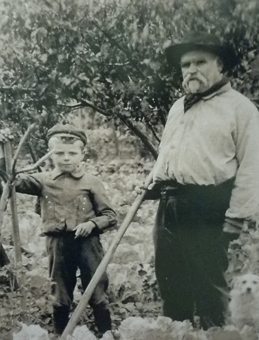
The hotel’s cinema and bar were torn down years ago because of their precariousness, but you can still take a look at the abandoned hallways and mangled staircases where once walked prim ladies and upright gentlemen at the turn of the century.
It’s a bit like looking at the sunken hull of the Titanic and envisioning how grand it must have been. The view from the crumbling lobby is stunning, even with the manicured lawns of the hotel long since left to their own devices.
This region is known for its olive groves and its beef. Driving to Pigüé the next day, we passed miles and miles of grazing cattle fattening up for winter.
Windswept Prairie Towns
Towns like Pigüé, Coronel Suarez and Coronel Pringles all formed around agriculture and are still farming and ranching. They are windswept prairie towns with a handful of friendly people and tiny provincial-style houses.
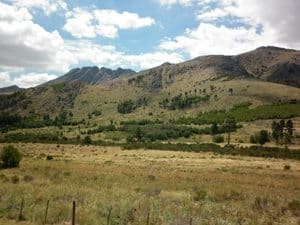
Pigüé was founded by French settlers Clément Cabanettes and Francisco Issaly in 1884. At the entrance to the town is the beautiful Fortunato Chiappara municipal park that you can drive into to reach the Museo y Archivo de la Ciudad de Pigüé.
I’ve been to a lot of small-town museums but this was by far one of the best. It’s set up in the former house of Mary Gorman de Sewell, a school teacher from the U.S.
She was part of a program started by President Domingo Faustino Sarmiento in the 1860s and 70s to bring U.S. educators to Argentina to improve the public school system. Gorman and others came, sight unseen, to teach the children of Argentina and integrated themselves into the history of this country.

Gorman was a teacher in Buenos Aires for five years, and was refused her salary the entire time by the government on the account of her being a foreigner! She ended up marrying Juan Sewell after the death of her former sweetheart from yellow fever, moved to Pigüé and never taught again. uses with wooden shutters to keep out the mid-day sun.
Ancient farming tools, formal dresses worn by society ladies, and pictures of massive extended families tell the town’s story.
But there is more to this town than just its quiet streets and postcard plaza. Every year they host the World’s biggest omelet festival – and it’s not the festival that’s big… it’s the omelet itself.
“This year they used over 20,000 eggs and had 16,000 people come to eat omelet,” Ricardo the town’s cathedral’s caretaker tells me as he takes a break from the afternoon heat.
This festival’s only real competition for weirdness is the world’s biggest chocolate egg, part of the yearly chocolate festival in Bariloche, Argentina near the Chilean border.
This region of Argentina definitely has its quirks, which is a nice change from your standard Argentine experiences. It trades in tango for trout and the sophistication of Buenos Aires and Mendoza for the down-home comfort of the prairie.
 Lydia Carey is a writer who lives in Mexico City where she runs a translating business.
Lydia Carey is a writer who lives in Mexico City where she runs a translating business.
- Greece Getaway: Camping Hacks for Your Next Getaway - April 25, 2024
- Products and Clothing You Might Enjoy - April 25, 2024
- Saudi Arabia Might Be Your Next Getaway Spot - April 23, 2024


